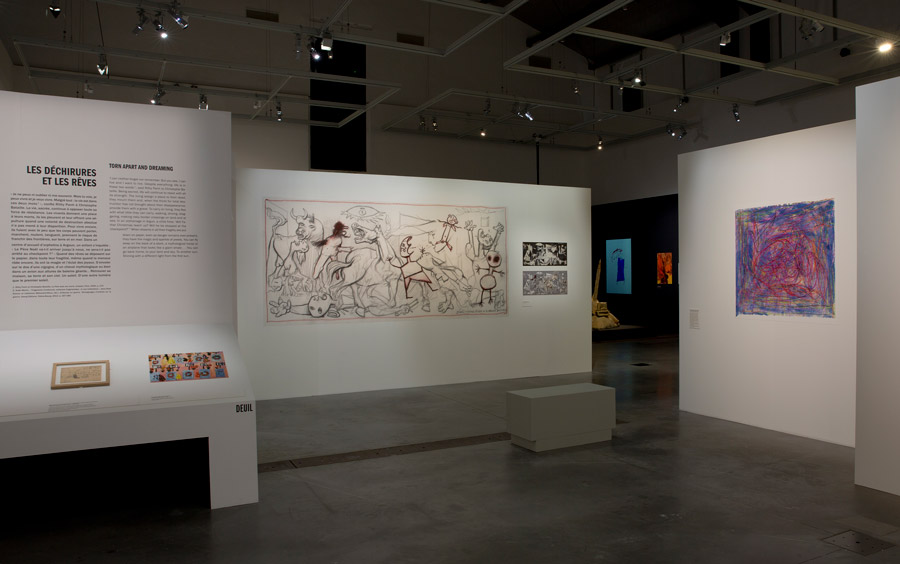Explosions. Drawings of children and mass violence. An exhibition at Mucem with Enki Bilal.
The Déflagrations (Detonations) exhibition at Mucem presents the violence of war from the point of view of those who experienced it, often in their earliest years. In the show, the children who express themselves through their drawings are survivors. World wars, concentration or refugee camps, Mediterranean crossings in dinghies... all of them have been exposed to enemy fire, deportation, escape, the horror of displacement, mass killings, or extreme poverty. They have seen how their families were broken up and disappeared in the course of a history that was beyond their control. These children used colored pencils to tell their stories in drawings, in a language both universal and intimate.
According to the exhibition’s curators, “this gesture reminds us that, though these children may be victims, they are also witnesses and actors who tell, record, show, and take part in the memories and narratives of societies.”
Their drawings can become valuable testimonies of a moment in history of which they became involuntary witnesses. The exhibition presents over 150 drawings from museums, national libraries and universities, international institutions and NGOs, as well as from the archives of psychiatrists, psychologists, and war correspondents. Among the films screened in the exhibition, a deeply moving video shows the recently deceased Françoise Héritier analyzing the underlying messages in the children’s pieces.
These drawings have reached us miraculously thanks to the perseverance of those who came to the aid of these young victims and those who have tried to offer them a better life –or, at least, moments of hope.
Enki Bilal, the artist associated with this project, in residence at Mucem, has been involved in this effort along with other artists who were invited for the occasion. He chose a drawing by a young Rwandan, about ten years old, showing his murdered father, and used it to create a version of the piece with his own interpretation of its painful message.
But Enki Bilal did not stop there. The theme of the exhibition led him back to Picasso’s monumental piece, Guernica, which also became an emblem of the cruelty of twentieth-century wars. He had the idea of interpreting the artist’s piece by working the children’s drawings into it, as if Picasso were, in a sense, each one of them. Enki Bilal revisits this iconic work –“so horribly real,” as it was described at the time it was painted– by drawing over it in black. Picasso was deeply affected and pained by the bombing of Guernica on a market day. In red, using the same process, Bilal superimposed and reproduced four drawings by anonymous child artists to give continuity to Picasso’s work, showing that the violence and absurdity of war and of the men who lead it are, unfortunately, timeless. Picasso’s Guernica dates from 1937, and it is now 2021. Enki Bilal ties the children’s lines into Picasso’s artistic gesture, giving them a different, magnificent dimension.
The incredible message that these children convey is that, in the depths of their hearts, they have the ineffable sense that they will continue to live. The colors, the sun, and the landscapes remind us of it, beneath the violence of the immediate subject and their palpable distress. Their lives will be marked by memories that they would love to shed, while ardently wanting to keep them intact to bear witness, not forget their villages or their families. These are the paradoxes of each individual’s history. “I can neither forget nor remember. But you know, I can live and I want to live. ‘Despite it all’: life is summed up in those three words.” (Rithy Panh).
Déflagrations. Dessins d’enfants et violences de masse.
Mucem, Marseille, from January 29 to August 29, 2021.





 Summary
Summary